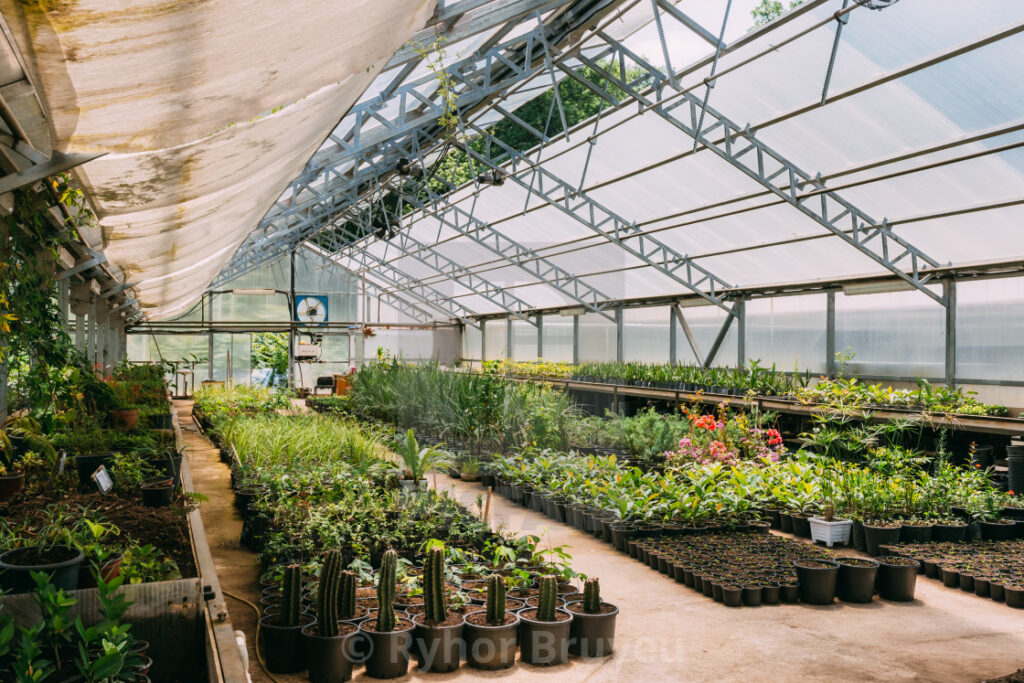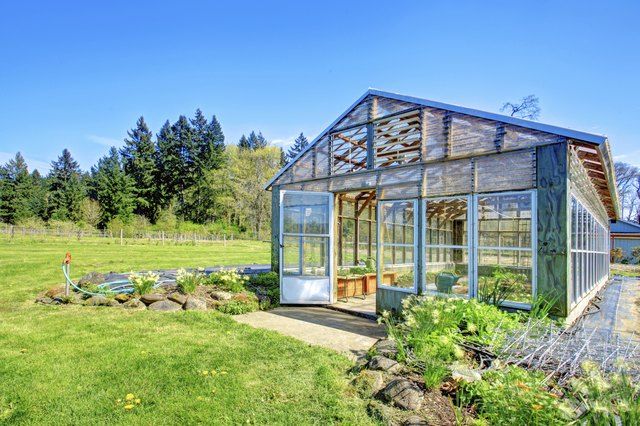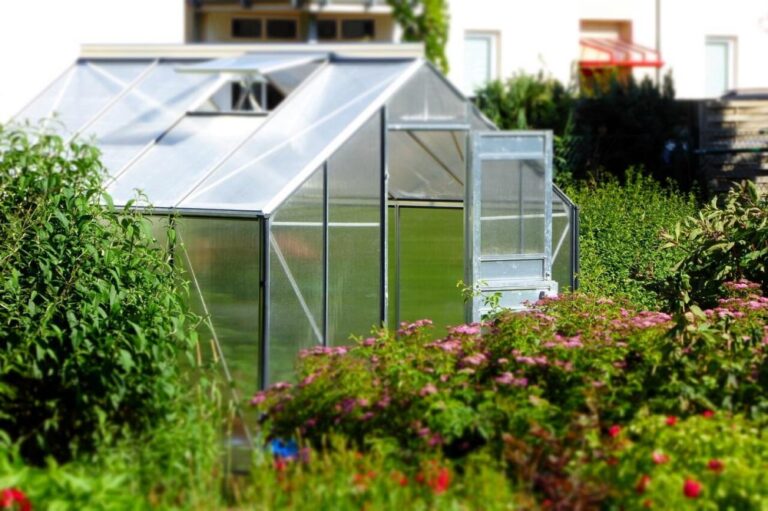Here’s a short overview of the greenhouse vs. hothouse.
- Greenhouse structures have transparent walls and roofs and are designed for various plant types and purposes.
- Greenhouses extend growing seasons, protect plants, and provide a controlled environment for cultivation.
- Hothouses also feature transparent materials but focus on maintaining high temperatures.
- Hothouses create a warm, humid climate year-round, ideal for tropical plants.
- Greenhouses are versatile, while hothouses specialize in heat-loving plants.
Let’s stick to learning in-depth about the differences between greenhouses and hothouses.
Definition and Structure: Greenhouse Vs Hothouse

A. Explanation of Greenhouse Structure and Purpose
Materials Used: Greenhouses are enclosed structures typically constructed with transparent materials like glass or plastic. These materials allow sunlight to enter and create a warm, controlled environment.
This design facilitates the growth of a wide range of plants by harnessing the sun’s energy efficiently.
Control of Light, Temperature, and Humidity: Greenhouses are designed to regulate light, temperature, and humidity. They utilize natural sunlight, but various mechanisms like vents and shades help manage temperature and prevent overheating.
Additionally, humidity can be adjusted with misting or watering systems, ensuring optimal conditions for plant growth.
B. Overview of Hothouse Structure and Purpose
Focus on Temperature Regulation: Hothouses, also known as hotbeds or heated greenhouses, primarily focus on temperature regulation.
These structures maintain consistently high temperatures, making them suitable for heat-loving plants like tropical species. They are often used to create a warm, year-round environment, especially in regions with colder climates.
Utilization of External Heating Systems: Unlike greenhouses that rely primarily on passive solar heating, hothouses use external heating systems.
These systems can include radiant heaters, space heaters, or hot water pipes to maintain the required warmth regardless of external weather conditions.
This reliance on heating systems makes hothouses more energy-intensive compared to greenhouses.
Greenhouse Vs Hothouse: The Differences between Greenhouse and Hothouse
The importance of evaluating the differences between a greenhouse and a hothouse lies in understanding each structure’s unique characteristics and benefits for plant cultivation.
A greenhouse typically provides controlled environments for plants, allowing optimal growth throughout the year. On the other hand, a hothouse focuses on providing warmth and protection to plants during colder seasons.
By understanding these differences, growers can decide which structure best suits their specific needs and goals for agricultural or horticultural practices.
Here, the differences between the greenhouse and hothouses are shared in points.
Structure and Purpose: Greenhouses are versatile enclosed structures with transparent walls and roofs, allowing sunlight in for various plant types and purposes.
Hothouses, on the other hand, are specialized structures primarily designed for maintaining high temperatures, catering specifically to heat-loving plants.
Materials: Greenhouses typically employ materials like glass or plastic for their walls and roofs, providing a balance of light and insulation. Hothouses also use transparent materials but focus on insulation and heat retention.
Temperature Regulation: Greenhouses use passive and active ventilation along with shading to regulate temperature. They harness solar energy during the day and release excess heat as needed.
Hothouses rely heavily on external heating systems, such as heaters or hot water pipes, to maintain high temperatures consistently.
Plant Range: Greenhouses can grow many different types of plants, such as vegetables, flowers, herbs, and seedlings. Hothouses are specialized for tropical or subtropical plants that require a warm, humid climate throughout the year.
Climate Adaptability: Greenhouses can be adapted to a broader range of climates and are suitable for use in various regions.
With appropriate ventilation and climate control systems, greenhouses can be tailored to suit the specific conditions of various climates, from cold and snowy winters to hot and arid summers.
Hothouses are limited in their climate adaptability as they must consistently provide warmth, making them less versatile.
Energy Efficiency: Greenhouses tend to be more energy-efficient since they rely on natural sunlight and passive heating during the day. Due to their reliance on external heating systems, houses are generally less energy-efficient and can lead to higher energy costs.
Growing Season Extension: Greenhouses sometimes extend the growing season, enabling year-round cultivation.
With their warm conditions, Hothouses maintain a consistent growing environment regardless of the external climate, making them suitable for the year-round production of heat-loving crops.
Cost Considerations: Hothouses’ initial construction and operational costs are often higher due to the need for heating systems.
Greenhouses may offer more cost-effective options for growers looking to cultivate a wide range of plants without the constant need for high temperatures.
Differences between the greenhouse and hothouse – A Table
Here’s a table summarizing the differences between greenhouses and hothouses:
| Aspect | Greenhouse | Hothouse |
|---|---|---|
| Structure | Enclosed structure with transparent walls and roof | Enclosed structure with transparent walls and roof |
| Purpose | Versatile, used for various plants and purposes | Specialized for heat-loving plants |
| Materials | Glass or plastic for balanced light and insulation | Transparent materials with an emphasis on insulation |
| Temperature Regulation | Uses passive and active ventilation, shading | Heavily relies on external heating systems |
| Suitable Plant Range | A wide variety of plants | Primarily for tropical or subtropical species |
| Climate Adaptability | Adaptable to a broad range of climates | Limited adaptability, must maintain warmth |
| Energy Efficiency | Generally more energy-efficient | Less energy-efficient due to heating systems |
| Growing Season Extension | Extends growing season | Maintains consistent warm conditions year-round |
| Cost Considerations | Often more cost-effective | Higher initial and operational costs due to heating systems |
This table gives a quick look at how greenhouses and hothouses
are different.
Greenhouse Vs Hothouse: Similarities between Greenhouse and Hothouse

The importance of evaluating the similarities between Greenhouse and Hothouse lies in understanding the commonalities between these structures used for plant cultivation.
By examining their shared features and functionality, we can gain insights into the benefits and advantages they offer.
Understanding the similarities between Greenhouse and Hothouse can help growers make better choices to meet their needs. This can involve controlling conditions, improving plant growth, or extending the growing season.
Here are some points showing similarities between a greenhouse and a hothouse.
Structure: Both greenhouses and hothouses are enclosed structures designed to create controlled environments for plant cultivation. They are constructed with transparent materials like glass or plastic to allow sunlight in.
Light Management: Both types of structures take advantage of natural sunlight to facilitate photosynthesis and plant growth. They maximize the use of available sunlight for the benefit of the plants.
Plant Protection: Greenhouses and hothouses offer protection from external environmental factors, including wind, rain, and pests. This protection helps maintain the health and quality of plants.
Temperature Control: While the extent of temperature control differs, both types of structures aim to provide a more stable and controlled temperature environment for plants compared to outdoor conditions.
Humidity Regulation: Both greenhouses and hothouses allow for humidity regulation. Growers can adjust humidity levels as needed to create optimal conditions for plant growth.
Crop Diversity: Both structures enable the cultivation of a wide range of plant species, expanding the possibilities for growing various crops, including vegetables, flowers, and herbs.
Season Extension: Greenhouses and hothouses extend the growing season, allowing for year-round cultivation of plants, which can be particularly beneficial in regions with harsh winters.
Crop Quality: Both structures contribute to improved crop quality by providing a controlled environment that reduces stress on plants and minimizes exposure to adverse weather conditions. This often results in better yields and higher-quality produce.
FAQs
What is the main difference between a greenhouse and a hothouse?
A greenhouse is a structure designed for a variety of plants and purposes, while a hothouse is specifically built to maintain high temperatures for heat-loving plants.
What are the primary benefits of using a greenhouse?
Greenhouses extend the growing season, protect plants from harsh weather, and provide a controlled environment for better growth and yield.
Why would I choose a hothouse over a greenhouse?
Hothouses are ideal for tropical or subtropical plants that require a consistently warm and humid environment, even in colder climates.
Do greenhouses and hothouses use the same materials for construction?
Yes, both greenhouses and hothouses typically use transparent materials for construction, such as glass or plastic.
Are greenhouses and hothouses energy-efficient?
No, Greenhouses are generally more energy-efficient than hothouses.
Can I use a greenhouse for growing tropical plants?
Yes, you can adapt a greenhouse to grow tropical plants by adjusting temperature and humidity controls, but hothouses are better suited for such plants.
Are there any climate limitations for using greenhouses or hothouses? Yes, Greenhouses are more adaptable to various climates, while hothouses are restricted to providing warm conditions regardless of the external climate.
What types of plants are commonly grown in greenhouses?
Greenhouses are versatile and can be used for many types of plants, like vegetables, flowers, herbs, and starting seeds.
How can I maintain the temperature in a hothouse during colder seasons? Hothouses require efficient heating systems, such as radiant heating or space heaters, to maintain the necessary warm conditions throughout the year.
Which structure is more cost-effective, a greenhouse or a hothouse?
Cost-effectiveness depends on your needs and the plants you want to grow. Greenhouses are generally more versatile and adaptable, while hothouses may require higher initial heating costs.
Conclusion
In summary, knowing how greenhouses and hothouses are alike and different can help you choose the best one for your needs.
While both structures provide controlled environments for plant growth, the key distinction lies in their heating methods. A greenhouse relies on passive solar energy, while a hothouse requires supplemental heating.
Factors such as budget, location, and specific plant requirements will determine the most suitable choice, ensuring optimal conditions for successful plant cultivation.

